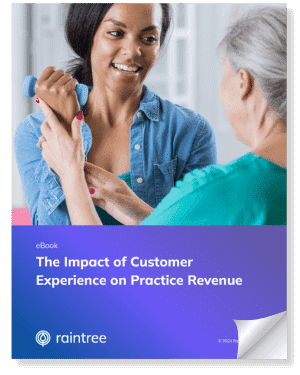
When was the last time you felt excited to go to the doctor’s office?
It might be a tall order, but the medical field continually strives to meet patient needs and expectations, while keeping them engaged in care.
With modern tools for patient engagement, the healthcare experience can truly become interactive rather than just informative, as it continues to be heavily influenced by patient preferences.
What is Patient Engagement?
Patient engagement is defined as “a concept that combines patient knowledge with provider interventions designed to increase activation and promote positive patient behavior.”
While engagement in healthcare includes standard appointment reminders, phone calls, targeted emails and other traditional methods of communication, now it has evolved to entail so many other contributing factors that determine patient satisfaction such as fast and easy self scheduling, participating in alternative methods of care or personally managing medical bills through electronic forms of payment (eStatements).
Why is Patient Engagement Important?
Patient engagement not only offers patients flexible functionality, better availability and more affordability but it also encourages shared decision making, which results in a collaborative relationship between patients and providers. Additionally, these conveniences often lead to reduced no shows, increased clinic profitability, and improved patient retention rates.
What Are Trends in Patient Engagement?
All forms of patient engagement are driven by patient behaviors and are adaptive to trends within the healthcare industry. For example, during the Covid-19 pandemic quarantine period, providers have had to implement virtual care technologies that accommodate these fears as well as encourage patients’ remote accessibility to treatment outside of conventional appointment settings.
Additionally, patient engagement trends often react in response to the ever-changing consumer market. For example, individuals communicating with healthcare providers via two-way text, staying up to date with a user-friendly patient portal, checking in for appointments via self-service kiosk, and more.
To provide a great patient experience, clinics can make use of technology at various points of engagement. As a leading provider of tools for patient engagement in rehabilitation therapy, Raintree Systems will provide an overview of how technology can serve PT, OT, SLP, and multi-specialty practices.
3 Essential Tools for Patient Engagement
1. Patient Portal
The patient intake process initially begins with our patient portal, an online dashboard that gives patients the ability to update medical history, fill out demographic information, send messages and completed forms as well as upload important documentation like insurance memberships, credit cards and other identification materials. By securing all this data in one place, providers have easy access to their patients’ health information (PHI) and are able to consecutively streamline both patient engagement as well as patient management.
2. Self Check-in Kiosk
In addition to the patient portal, Raintree’s self check-in kiosk allows patients to check in for appointments, sign or complete any forms and even make payments all from a mobile device rather than primarily having to sign a stack of paperwork. However, most importantly, it limits patients’ interaction with the front desk, reducing the risk of exposure and proactively ensuring the health of your business. With increased patient flexibility and more operational efficiencies, providers will save time and money while also gaining clinic availability.
3. The Power Of Connect
Along with standalone telehealth, Connect serves as a virtual communication hub for patients, providers, referral sources and payors. Our proven collection of efficiency tools and patient engagement features, including secure messaging, referral tracking and availability management, are all built to help foster patient/provider relationships as well as support remote workforce continuity. Similarly, our advanced relationship management (ARM) dashboard allows you to build and create campaigns, add patient profiles in addition to setting up communication narratives in real time or through our engagement scheduling coordinator. Whether it be appointment reminders, global health alerts, NPS surveys, payment plan notices or clinical email messages, our technology enabled solutions are equipped to promote continuity of communication and care.
Read the eBook:
The Impact of Customer Experience on Practice Revenue
